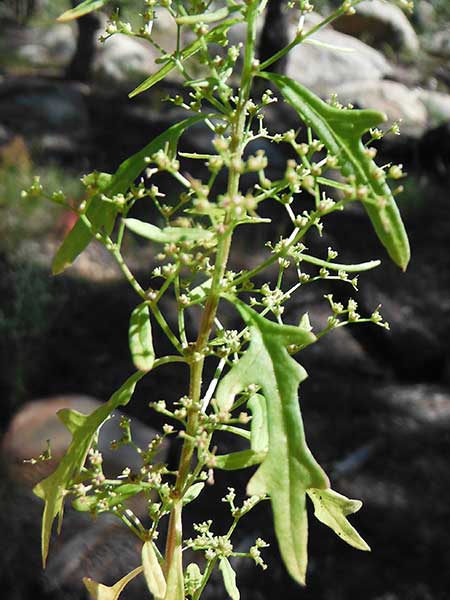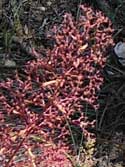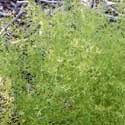Fetid Goosefoot
Dysphania graveolens

Observed in the mixed conifer, juniper and oak woodland near Granite Mountain, Yavapai Co., Arizona, USA. Sept. 2012.
Sponsored Links:
FLOWERS: Very small, but often set in great abundance on intricately branched stems.
LEAVES: Lower leaves are divided into several elongated lobes and are often tinged orange or red. Crushing or even brushing against the foliage releases strong aromatic chemicals which many people find offensive and others pleasant.
ANNUAL: Seeds from past seasons germinate with warm rains of late spring or summer resulting in mostly low plants less than 30 cm tall. After flowering, as the seeds develop and the soil dries, the whole plant changes color to red.
RANGE: Native through much of western United
States. Sunny spots between mature ponderosa pines most often support this herb. W. D. Armstrong found entire hillsides painted red by the abundance of this plant in areas of the White Mountains affected by prior wildfires.
FRUIT: Each of the numerous flower results in a small seed.
UNARMED.


Chenopodiaceae -- Goosefoot Family
now combined into the Amaranthaceae
More Information:
- Southwest Environmental Information Network
- Post Fire in White Mountains
- USDA Plant Profile
- Google Images
- Google Scholar Literature Search